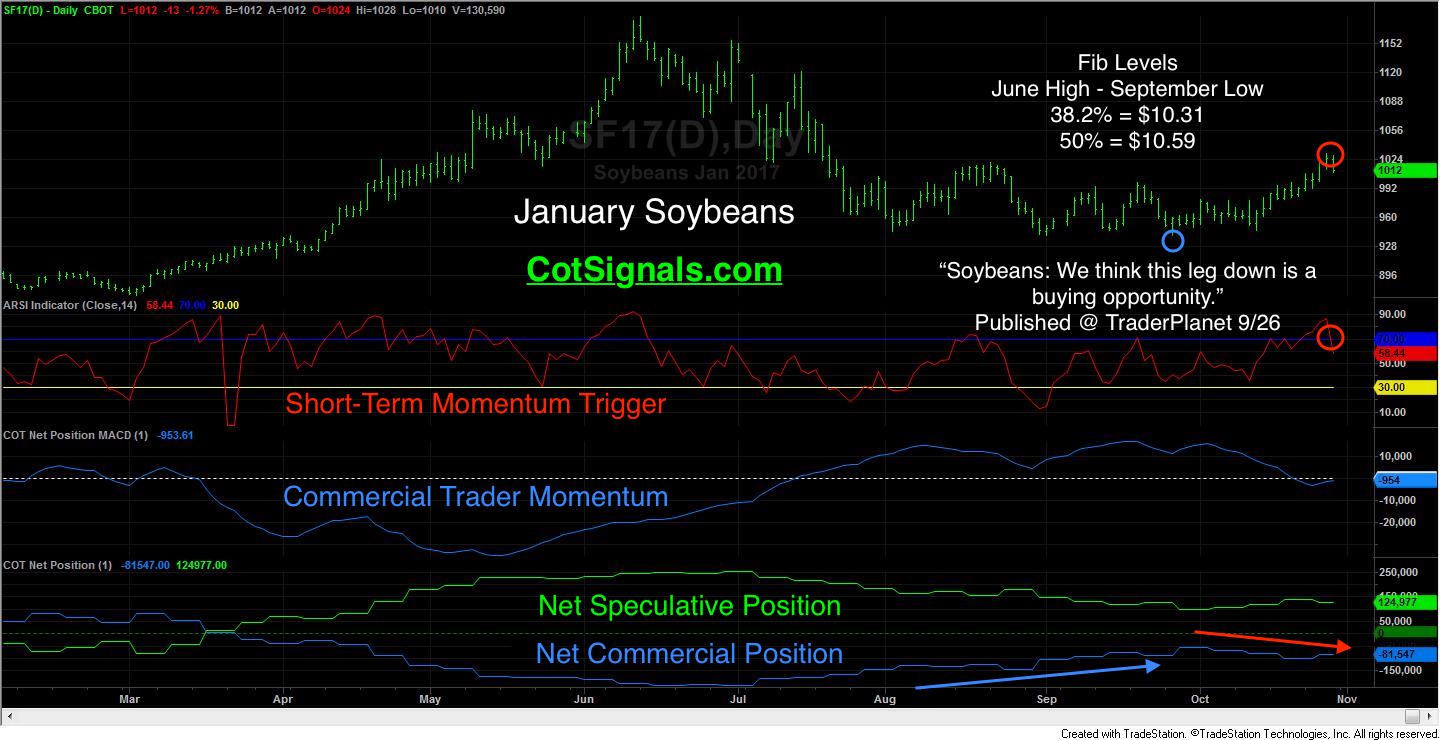With all of the election talk and focus on the financial markets, we’ve managed to find good trading opportunities in the agricultural commodity markets like the grains and meats. These markets are driven more by supply and demand than they are by exit polls, leaked documents and daily rhetoric. This week, we’ll follow up on a soybean trade we published here, one month ago as it appears it may be time to take profits if not, reverse to short.
September 26th we stated, “We think this leg down is a buying opportunity. We’re not sure if the $9.37 area will hold, but we’ll put on a partial position above this level. If $9.37 fails, we expect perhaps another $.50 worth of decline…” Our bullishness was based on the seasonal expiration pattern of the November contract along with the commercial processors’ purchases. While we didn’t get the rest of the decline we expected, we have gotten a rally of nearly $1 in the futures, which is equal to about $5,000 per contract.
The rally off the September lows also provides an excellent depiction of the farmers’ actions. Recent estimates by the USDA put the November 2016 breakeven price just under $9 per bushel. Their price range forecast for 2017 currently ranges from $8.30 to $9.80 per bushel. The November contract’s expiration harvest rally proved a boon to late hedging farmers. More importantly, this rally has led to new farmer short hedging in the January contract.
Now, let’s review the setup for our method of following the commercial traders’ actions. Our discretionary COT Signal service is based on the following three components. First, we only take trades in line with the commercial traders’ momentum as measured by the MACD in the third pane of the included chart. Secondly, we wait for speculators to push the market into oversold or, overbought territory against the commercial traders’ momentum. Finally, once the market reverses back in line with the commercial traders’ momentum, we enter in the same direction and use the recently created turning point as our protective stop placement point.
This brings us to our current situation. Commercial momentum is negative, and our short-term momentum trigger is registering overbought. Friday’s reversal signals our short entry. This also provides the protective buy stop placement point of $10.31, which probably not coincidentally coincides with the 38.2% Fibonacci retracement level from the June high to the September low.
One final note, our Discretionary COT Signals program, the one featured here, is more sensitive than our mechanical version, which remains long the January soybean futures.
Please visit COT Signals for a free trial of our Discretionary program and performance results of our mechanical programs.





